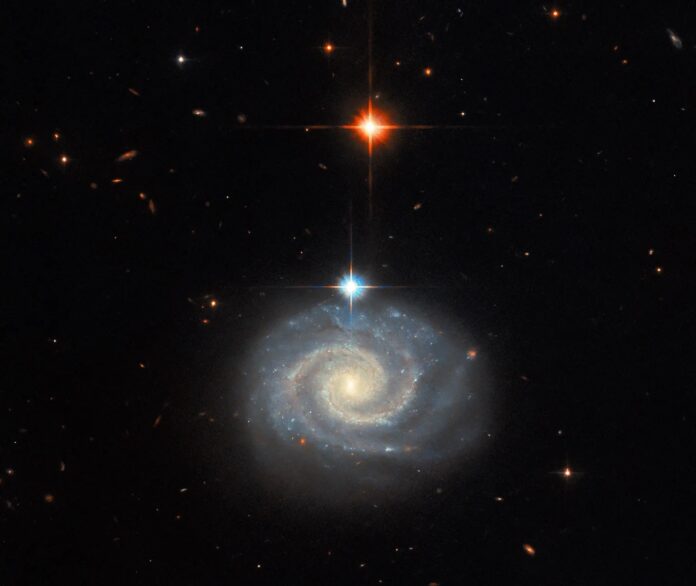NASA recently shared a whirling image that features a bright spiral galaxy called MCG-01-24-014. Located about 275 million light-years from Earth, MCG-01-24-014 is categorized as a Type-2 Seyfert galaxy. The exciting fact is the universe has an active galactic nucleus (AGN).
Seyfert galaxies are a common type of active galactic nucleus (AGN), similar to quasars. They are relatively nearby galaxies, and their central AGN does not overshadow the host. Seyfert galaxies are classified into Type-1 and Type-2 based on their spectra, with Type-2 emitting specific ‘forbidden’ emission lines in their spectral lines. Quasars, on the other hand, are distant AGNs with intense luminosities that outshine their host.
Knowing the origin of spectra is necessary to comprehend why light from galaxies could be forbidden from being emitted. Because particular atoms and molecules absorb and emit light at specific wavelengths, scopes have the appearance that they do.
This is because of quantum physics, which states that electrons—the tiny particles that circle the nuclei of atoms and molecules—can only exist at extremely exact energies and absorb or lose extremely specific amounts of energy. These extremely precise energy levels match the light wavelengths emitted or absorbed.
Quantum physics has specific rules; some say that certain light colors, called forbidden emission lines, shouldn’t exist. These rules were made in labs on Earth, but in space, especially in energetic galactic cores, these rules may not apply. So, the light we thought was “forbidden” can shine out toward us from space.
